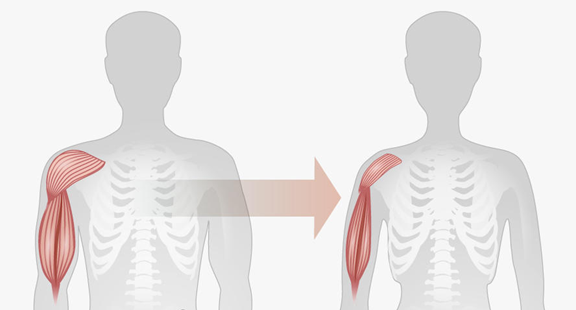|
| |
ResearchInterestingly, certain types of rodents, frogs, bears, bats, and snakes spend months of physical inactivity during hibernation. According to the U.S. National Park Service, during the winter, food is scarce and it is very cold, so animals evolved a way of surviving these harsh conditions by reducing their metabolism, slowing down their heart rate, and lowering their body temperature. How do animals survive hibernation without significant muscle atrophy? Can we apply their survival trick to treat or prevent muscle atrophy in people confined to bed?
A group of scientists from the University of Alaska Fairbanks and Dr. Esther E. Dupont-Versteegden from the Department of Physical Therapy and the Center for Muscle Biology at the University of Kentucky examined changes in muscle physical and protein catabolic changes in juvenile arctic ground squirrels (Urocitellus parryii) through several time points of hibernation as compared to pre-hibernating animals. Their findings were published in the journal Comparative Biochemistry and Physiology A.
To perform the study, the squirrels were trapped in July and housed under temperature and light/dark conditions that simulated the summer. In late September, the temperature and light/dark conditions simulated winter, triggering the hibernation instinct. Muscle tissue was obtained at approximately 2, 6, 11, and 20 weeks after hibernation started, flash-frozen in liquid nitrogen, and analyzed.
The researchers found that muscle mass, fiber type and cross-sectional area, femur length, RNA concentration, and ribosomal RNA were statistically similar through hibernation time. They did find some differences in the expression of certain genes that kept protein biosynthesis just as if the squirrels were not hibernating. Preserving the biochemical 'status quo' attenuated atrophy, allowing the squirrels to move normally during and after hibernation.
Dupont-Versteegden and her colleagues remarked that “Interventions to preserve muscle mass and strength during atrophy-inducing periods are needed, but currently unavailable.” This means that there is not much that can be done to prevent muscle atrophy and weakness if a person is bedridden. By identifying the biochemical pathways that stop muscle atrophy in squirrels, the research team hopes to develop potential medications or treatments that will reduce post-hospitalization physical rehabilitation.  Healthy muscle (left) and muscle showing atrophy (right). Muscle atrophy occurs when the muscle loses cross-sectional area and strength due to physical inactivity. Credit: Cancer Cachexia: After Years of No Advances, Progress Looks Possible was originally published by the National Cancer Institute. https://www.cancer.gov/about-cancer/treatment/research/cachexia. Healthy muscle (left) and muscle showing atrophy (right). Muscle atrophy occurs when the muscle loses cross-sectional area and strength due to physical inactivity. Credit: Cancer Cachexia: After Years of No Advances, Progress Looks Possible was originally published by the National Cancer Institute. https://www.cancer.gov/about-cancer/treatment/research/cachexia.
| |
| KAS Newsletter* - August 2025 |